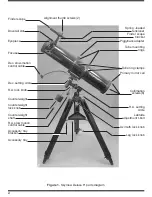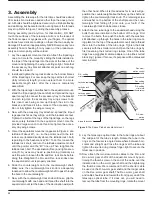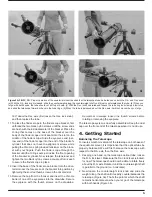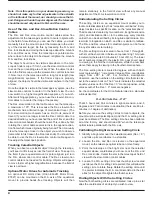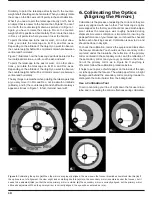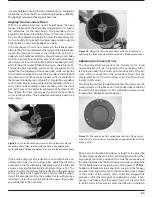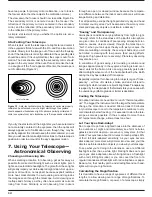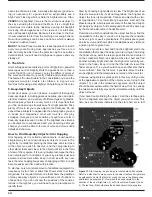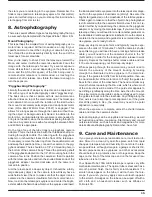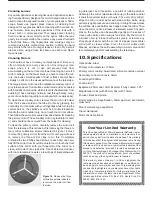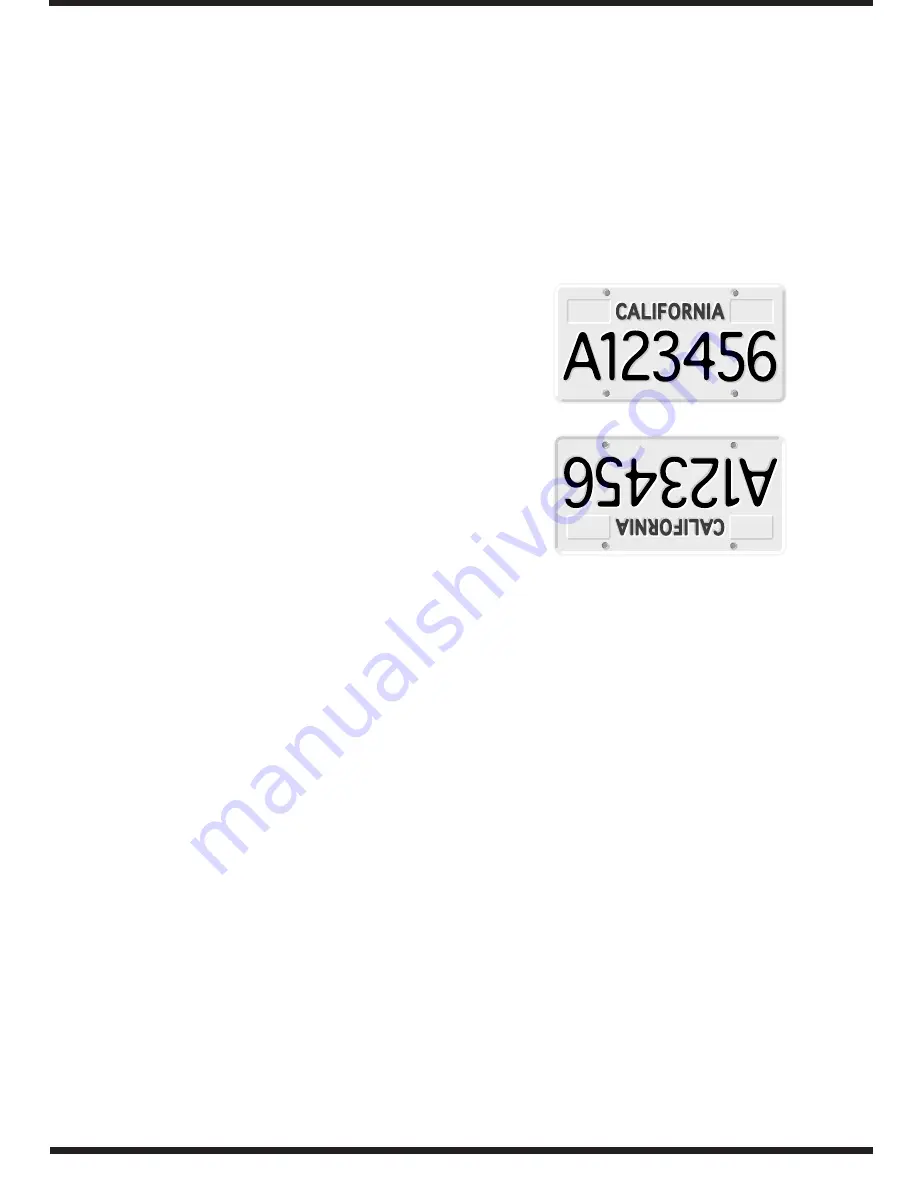
6
3. Retighten the counterweight lock knob. The telescope is
now balanced on the R.A. axis.
4. To balance the telescope on the Dec. axis, first tighten the
R.A. lock knob, with the counterweight shaft still in the hor-
izontal position.
5. With one hand on the telescope optical tube, loosen the
Dec. lock knob. The telescope should now be able to rotate
freely about the Dec. axis. Loosen the tube ring clamps a
few turns, until you can slide the telescope tube forward
and back inside the rings (this can be aided by using a
slight twisting motion on the optical tube while you push or
pull on it) (Figure 3c).
6. Position the telescope so it remains horizontal when you
carefully let go with both hands. This is the balance point
(Figure 3d). Before clamping the rings tight again, rotate
the telescope so the eyepiece is at a convenient angle for
viewing. When you are actually observing with the tele-
scope, you can adjust the eyepiece position by loosening
the tube rings and rotating the optical tube.
7. Retighten the tube ring clamps.
The telescope is now balanced on both axes. Now when you
loosen the lock knob on one or both axes and manually point
the telescope, it should move without resistance and should
not drift from where you point it.
Focusing the Telescope
Insert the low-power 25mm eyepiece into the focuser and
secure with the thumb screws. Move the telescope so the
front (open) end is pointing in the general direction of an
object at least 1/4-mile away. Now, with your fingers, slowly
rotate one of the focusing knobs until the object comes into
sharp focus. Go a little bit beyond sharp focus until the image
just starts to blur again, then reverse the rotation of the knob,
just to make sure you’ve hit the exact focus point.
If you have trouble focusing, rotate the focus knob so the draw-
tube is in as far as it will go. Now look through the eyepiece
while slowly rotating the focus knob in the opposite direction.
You should soon see the point at which focus is reached.
Do You Wear Eyeglasses?
If you wear eyeglasses, you may be able to keep them on
while you observe, if your eyepieces have enough “eye relief”
to allow you to see the whole field of view. You can try this by
looking through the eyepiece first with your glasses on and
then with them off, and see if the glasses restrict the view to
only a portion of the full field. If they do, you can easily
observe with your glasses off by just refocusing the telescope
the needed amount.
Aligning the Finder Scope
The finder scope must be aligned accurately with the tele-
scope for proper use. To align it, aim the main telescope in the
general direction of an object at least 1/4-mile away, such as
the top of a telephone pole, a chimney, etc. Do this by first
loosening the R.A. and Dec. lock knobs. Position the telescope
so the object appears in the eyepiece’s field of view and then
retighten the R.A. and Dec. lock knobs. Use the slow-motion
control cables to center the object in the eyepiece.
Now, look in the finder scope. Is the object visible? Ideally, it
will be somewhere in the finder’s field of view. If it is not, some
coarse adjustments of the two black nylon finder scope align-
ment thumb screws will be needed to get the finder scope
roughly parallel to the main tube.
NOTE: The image in both the finder scope and the main tele-
scope will appear upside-down (rotated 180°). This is normal for
finder scopes and reflector telescopes (see Figure 4).
By loosening or tightening the alignment thumb screws, you
change the line of sight of the finder scope. Continue making
adjustments to the alignment thumb screws until the image in
both the finder scope and the telescope’s eyepiece is exactly
centered. Check the alignment by moving the telescope to
another object and fixing the finder scope’s crosshairs on the
exact point you want to look at. Then look through the tele-
scope’s eyepiece to see if that point is centered in the field of
view. If it is, the job is done. If not, make the necessary adjust-
ments until the two images match up.
The finder scope alignment needs to be checked before every
observing session. This can easily be done at night, before
viewing through the telescope. Choose any bright star or plan-
et, center the object in the telescope eyepiece, and then adjust
the finder scope’s alignment screws until the star or planet is
also centered on the finder’s crosshairs. The finder scope is
an invaluable tool for locating objects in the night sky; its usage
for this purpose will be discussed later, in detail.
When transporting the telescope, we recommend removing the
finder scope and bracket from the tube. This is done by simply
loosening the thumb screw on the dovetail slot. Store the finder
scope and bracket in an appropriate eyepiece/accessory case.
Naked-eye view
View through finder scope and telescope
Figure 4. The view through a standard finder scope and reflector
telescope is upside down. This is true for the SpaceProbe 130mm
and its finder scope as well.


